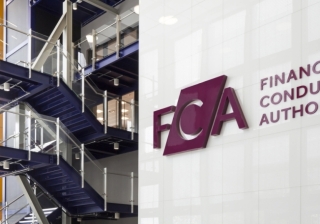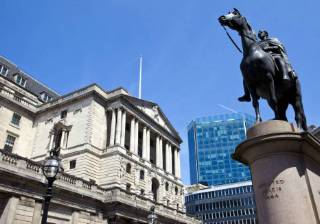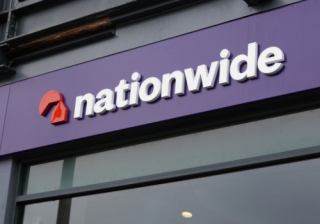How the pandemic boosted awareness of alternative finance
While it is fair to say that the Covid-19 pandemic has impacted upon no two sectors the same, there can be few areas of the economy which come close to the intrigue of the property market over the past 18 months.

"Much like the property market as a whole, questions linger over the sustainability of alternative finance’s rapid rise in activity."
Latterly, as we look with cautious optimism to a post-pandemic recovery (should the success of the vaccination programme continue), it is commonplace to regard the property market as having experienced a prolonged period of remarkable growth. Indeed, with all major house price indices showing that the average UK house price levels has hit record levels, instigated by a rate of annual growth higher than any recorded since 2004, it is inarguable that the property sector has experienced a rare pandemic purple patch.
The overall buoyancy of the property market throughout the pandemic is perhaps more remarkable given the initial slump as the Covid-19 crisis took hold. In April and May 2020, the volume of residential property transactions fell by approximately 50% compared to the levels seen a year earlier.
Of course, the property market received due support as it sought to rebound from the hardships of the first lockdown in the spring of last year. Most notably, the Government’s decision to introduce the stamp duty holiday in July.
The frenzy of activity that ensued has brought a huge amount of attention to the real estate sector, not least the property finance market. In turn, bridging loans, which were able to meet the unique palette of new requirements prospective homebuyers were dealt by the pandemic, have moved further into the mainstream.
Bridging loans rise to prominence
In the midst of uncertain economic conditions, traditional lenders became more cautious to offer mortgages. Yet at the same time, demand from buyers was on the rise. It naturally followed, then, that alternative finance would become a useful resource for buyers looking to take advantage of the SDLT holiday.
Even for lenders still willing to issue loans, the sudden surge in demand left many struggling to cope. This resulted in longer wait times, and with the holiday having a hard deadline before the rate of savings began to taper off, buyers were keen to complete at pace.
According to the Association of Short-Term Lenders (ASTL), there was a year-on-year increase in bridging loan applications in Q3 2020 of 25.7% – an upward trend that continued into Q4’s 39.1% year-on-year increase. These figures underline growing recognition of and demand for short-term finance solutions.
Flexibility and accessibility
As noted above, many lenders have been overwhelmed by the surge in buyer demand. Indeed, figures from Trussle suggest that the average time for a lender to approve a mortgage almost trebled over the course of 2020 – from eight days to 22 days. It is important to note that this figure represents only the approval of the loan, not its deployment. Conversely, many bridging loans can be deployed in as little as three days, offering critical flexibility and control over a volatile market.
Sellers must also be considered as a factor. Naturally, many house purchases are funded by the sale of an existing property asset, with increasing protracted chains forming over the past year. When delays in accessing mortgage finance hindered one link in the chain, doubts were thrown over the viability of any number of connected purchases. Accordingly, many have turned to bridging loans to access the finance to complete their purchase, which will be paid back with the returns on the eventual completion of their own sale.
We must also consider the innate factors that made traditional lenders incompatible with the surge in demand. Many buyers, particularly those with irregular sources of income or complicated wealth allocations, were hamstrung by the mainstream providers’ tick-box methodologies to loan applications. The flexible and bespoke offering of bridging loans helped these buyers more dependably access the finance required to complete purchases.
Much like the property market as a whole, questions linger over the sustainability of alternative finance’s rapid rise in activity. For instance, it is widely anticipated that October’s return to normal SDLT rates will see a cooling of activity. With the market moving at a slower pace, it can be credibly argued that bridging loans will see a slight downturn in volume of applications – buyers will simply feel confident in their ability to complete under less volatile conditions, and with no rush to meet a tax break deadline.
Nonetheless, the increased appetite for alternative finance can only be a good thing for the sector – for many, the pace of delivery and flexibility on offer is a better fit than traditional lenders, regardless of macroeconomic circumstance.

Breaking news
Direct to your inbox:
More
stories
you'll love:
This week's biggest stories:
FCA
Firms required to report complaints involving vulnerable customers under simplified FCA rules

Santander
Santander joins mortgage price war with new rates from 3.51%

FCA
FCA sets out timeline for mortgage rule changes

Inflation
Bank of England set to cut rates as inflation falls to eight-month low

This week's biggest stories:
FCA
Firms required to report complaints involving vulnerable customers under simplified FCA rules

Santander
Santander joins mortgage price war with new rates from 3.51%

FCA
FCA sets out timeline for mortgage rule changes

Inflation
Bank of England set to cut rates as inflation falls to eight-month low

Nationwide
FCA fines Nationwide £44m for inadequate financial crime controls

FCA
FCA announces new measures to support growth of mutuals sector
